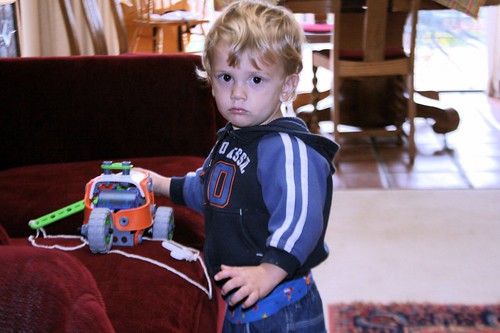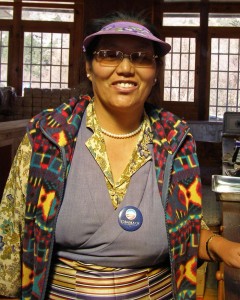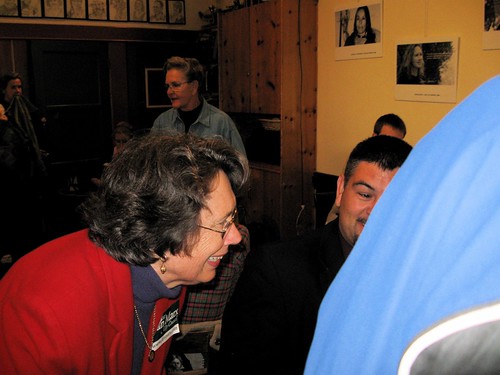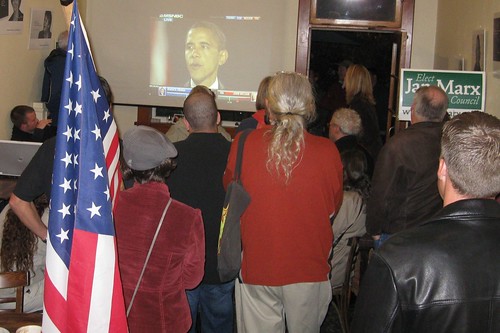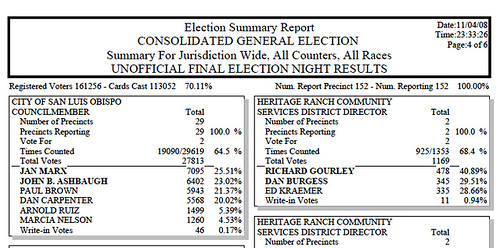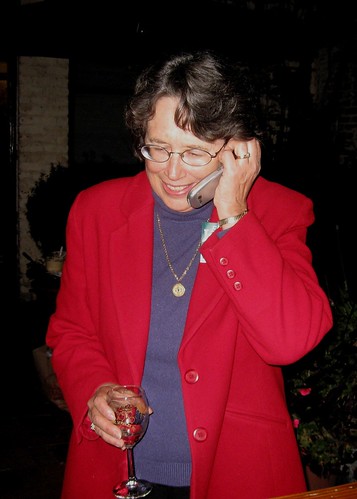Jan was sworn in, along with her ally John and old Mayor Dave, the first day of December–accompanied by fanfare and applause from her supporters.

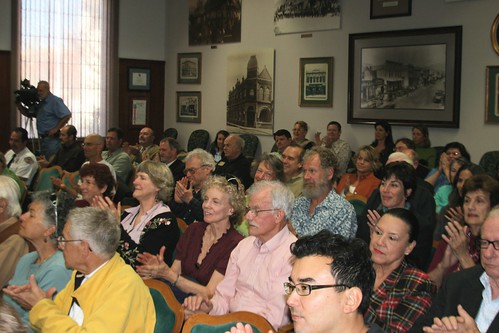
I attended with Ian and Lucas.

Their first Council meeting took place the next night, and it erupted into what’s as close as it’s gotten in this town to mayhem at City Hall.
The issue was the construction of a parking lot for the senior center”a pet project of the mayor’s approved by the previous council majority and opposed by an agitated group of residents, mostly those who live nearby, but also others who object out of budgetary and environmental concerns. Why pave over space that an earlier general plan designated for a community garden, especially since the paving would threaten the life of the largest heritage tree in the city. Jan had taken a strong position opposed to the lot in her campaign, but it turns out that John supported it. At the meeting he apparently lost his cool and attacked her. She responded appropriately
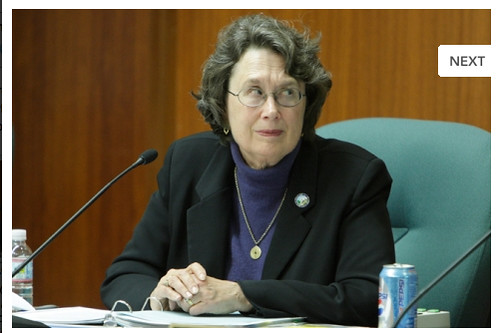
and the newspaper took her side.
The same day in the morning I heard from Walt at the Center for Teaching and Learning that my June proposal for a Sustainability Book Club would be funded and publicized.
Claire is holding her new job in telephone sales and we have started to babysit Lucas while she’s at the office full time. Lucas idolizes his older brother Ian and Ian is loving and patient with him.
I got an Ipod Shuffle for $49 and use it to practice Spanish while cleaning, babysitting and driving. I’ve had some misgivings about the plan to go Colombia in February, but an email exchange with Jimmy, my high school friend who found me through this blog, inviting me to stay with his family in Bogota has strengthened my resolve to carry through. Whenever I got away from the tourist areas in the Yucatan while we were there this summer for the wedding of our niece, I was entranced by the language and local people. And the effort to learn a new language is taking on the challenge of my growing short-term memory deficits.
Wednesday I was on my way to the public library with Lucas, when a mother and three year-old in the garage elevator asked if we were going to Boo-boo Records for the weekly sing along. I’d never heard of it. Outside the store one could hear loud childrens’ voices and clapping. There was hardly room to sit on the floor in the large back room where a woman in funny honkers, bright red lipstick and black shoes and stockings was leading a wild chorus of singing and dancing to Raffi’s “Baby Beluga.” None of the kids were older than three. I cant wait for next Wednesday.
That evening Jan and I attended an event at Steynberg Gallery hosted by our local Sierra Club. Chad and Nancy, two students active in Focus the Nation, gave a presentation about state and local government climate initiatives. Our new City Council members John and Jan both were invited to speak, as was one other Council Member. But like the 60 odd activists who also attended, they were there more to listen and to brainstorm about the policy specifics that have been set in motion by AB 32, the epochal legislation signed by the governor two years ago, and about another bill AB 117, which allows communities to buy electricity from anyone who produces the kind of green power that must replace CO2-creating sources instead from PG and E. These two bills point the way to transformative rather than symbolic action and mere words. The atmosphere was electric. Real education taking place, and conducted by the students for professors.
Seven liberal arts faculty colleagues have expressed interest in my Culture of Sustainability panel for February 5. I’ve been doing some research for the overview I hope to present. I may start with the subtitle from Paul Hawken’s new book, Blessed Unrest: “How the largest movement in the world came into being and no one saw it coming,” and then try to define that movement, trace some of its history back to the sixties, outline prominent strains”in higher education, the arts, film and media, eating, consumption, transportation, and generational identity–and to close with a display of paradigmatic examples: AASHE, Andy Revkin of the NYTimes, David Orr, Orion Magazine, the Santa Lucian, and Buddy Stein’s Hunts Point Express.
Kevin, my long lost former student and friend, checked in by email Thursday announcing that he’s found a tenure track job teaching writing in L.A. He hadn’t stayed in touch for years, he said, because he was waiting for news like this to relate. We hope to meet later this month for an overnight hike and campout. I had talked wistfully about him with Joe, his former classmate and fellow performer in our crazy Shakespeare productions, when he came by for the evening two weeks ago on a visit from London, where he works as the librarian in the British National Portrait Gallery.
I’ve been dithering around with holiday cards for weeks”first scouring the web for the best deal on sites allowing you to upload your own photos and order printed cards and then having to send back the product because the color was so poor, then going to kinkos to see if they could come up with a decent print, then buying ink for my printer to try to do this at home and discovering the printer wasn’t working right and finally settling upon Staples, where they did a fine job at an excellent price. I finished the cutting and pasting and now have 125 cards with two pictures selected from the 2500 I’ve kept during the last year.


They’re ready for Jan to address with the labels she prints, and together we will sit in the evenings and write in them to people we feel close to yet may never see again. I’ve become addicted to this holiday card ritual as resistance to shopping frenzy and other excesses of the season, as instanced in the letter to the editor I sent yesterday:
Somehow the sight of hundreds of thousands of incandescent bulbs imported from China obscuring the stars and squandering energy fails to kindle the holiday spirit in me. The day your Sunday edition glorified this spectacle of waste and bad taste brought the news that “Carbon dioxide, methane and nitrous dioxide concentrations reached record levels in the atmosphere in 2007, according to the World Meteorological Organization. CO2 levels now stand at 383.1 parts per million, well past the 350 ppm level scientists believe is the safe upper limit beyond which global warming will destabilize Earth’s delicate climate and lead to rising sea levels, extreme storms, heatwaves and droughts.”
Friday night was the Holiday parade featuring the members of the City Council and their families waving to the crowd from the rear balcony of the ersatz Trolley that takes tourists from the hotel districts to the downtown. Ian brought Talia, his friend from school, to our house for a play date in the afternoon, joining Lucas in the living room. I cooked dinner and lit the Friday night candles, and then we all headed downtown for the festivities.
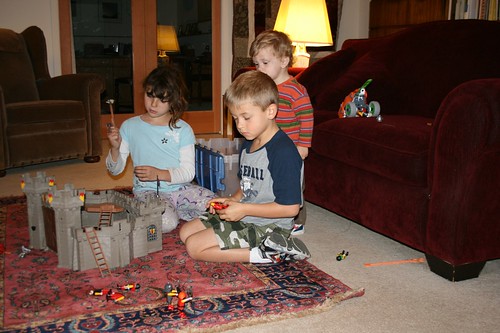
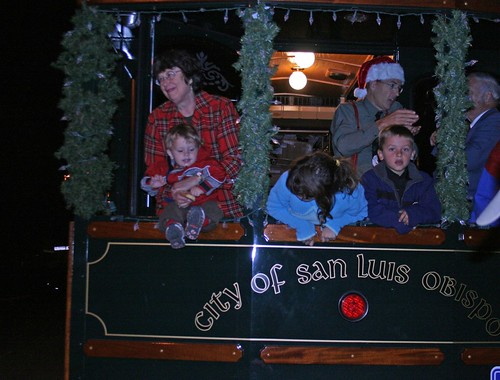
Afterwards Claire came by for a sleepover with her two boys.

